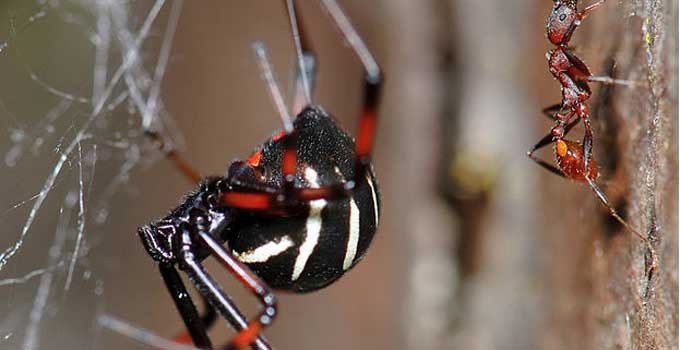When it comes to butt shaking, wild animals were doing it long before twerking merited a listing in the dictionary.
The male black widow spider depends on it for sex and his short life. Honeybees are famous for their butt-shaking waggle dance, and so forth.
Erika Engelhaupt reports it in Animals Were the Original Twerkers in Science News last week.
From the article:
Black widow spiders are just the latest documented twerkers. Females normally kill the males after they mate but for males to get close to mate involves some precise butt wagging.
The males do it when they go into the female’s web to not get eaten immediately and get time to mate, according to studies involving “a laser Doppler vibrometer.”
It showed “lengthy and repeated bouts of abdominal temulations” averaging 43 wiggles per second.
There are also video links to other animals with “rears in gear.”
They include peacocks, a bird of paradise, and male wire-tailed manakins, who stage dance-offs to get females.
Big cats, like kittens, also wiggle their rears just before pouncing, probably better to launch from back legs.
Japanese cockroaches, an invasive species in New York City, produce a viscous secretion that they throw onto predators by shaking their butts.
As for the flashdance of the peacock spider, it is “one of the most beautiful displays of rump-shacking in the animal kingdom.”
“If you haven’t seen it, you must, and if you’ve witnessed it before, you’ll want to see it again.”
Eat your heart out, Miley Cyrus.




Who’s talking